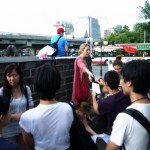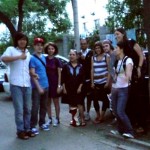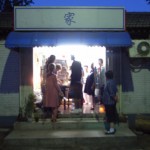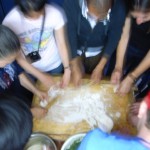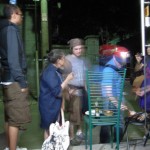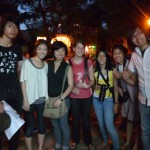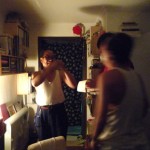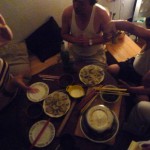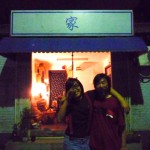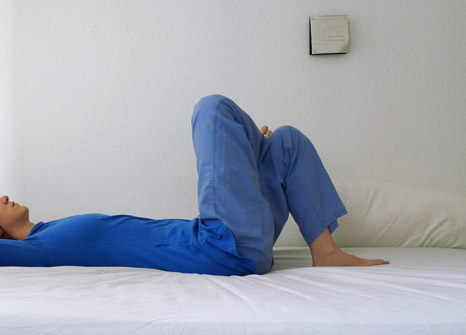Part and parcel of a response to questions from someone else a while back, part and parcel of what it feels to be rejected, what it feels to be angry, frustrated, unwanted… but maybe, oh maybe, motivated. An all-in-one.
As far as how I frame these projects… it is, to be quite honest, a rather tricky question. When my neighbours know that I am an artist, does anything that I initiate count as “art”? Or, if they have an understanding of “art” to mean oil paintings and wealthy galleries in the 798 arts distict of Beijing, are the things that I do as artist “not really art”? This is an age-old question already, fired off long before Duchamp, before the modernists, before the anything “next”, the non-traditional, the “new”.
Hmm… pretentious? 虚伪?
Last week, her question of the week: “Does ‘alternative’ also mean ‘minority’?”
In regards to such categorization, presentation, or address, I think we can embrace and understand the need for multiplicities of thought and approach. On one hand, this is for me an artistic endeavor, and if asked to explain it theoretically, it seems natural for me to do so, in all my impracticality, from an artistic standpoint. But amidst the sharing of something with someone during the moment of exchange/creation, it also lies beside the point to think about how we should label it. While such labels are important, too, it is in actuality that these are crucial in all places outside of the work itself, e.g., in terms of its marketing, presentation, and documentation.
So where does the ART of the artwork lie? This is a question we can ask of any artist, a la art school 101, but given the current contexts it comes again that one should justify oneself against the concreteness of the “product”. Is this really the case? Amidst the artfulness of the downfall of financial capital, what materialisms must we still rely upon? You might say that domestic interactions in China are less affected by such crisis, but we cannot neglect a reconsideration of where the artfulness of the thing is. (Do we get into a question of virtuosity here?)
Can we talk about transaction anymore these days? If the very nature of the exchange itself should determine the material and form of the artwork, are we talking about economies or aesthetics? What is social work? Is human interaction a question for within a museum, within the public sphere, or within politics? In which one do we participate?
Of an art which is created of such interaction and participation, we look to it as a “third thing”, possibly a positive externality outside of you and I both, but created by you and I. This is not necessarily a clarity of approach. What is 含蓄 is outside and inside, a weaving——containing and embodied yet implicit, veiled. “We give appearance,” he says.
We start to learn and recognize things in one another that we had not noticed before. In our own neighbourhood first, but also by reflecting a global position back onto the local. By adding value to such things that where we had not before, we could consider transaction beyond the monetary, but also not merely as a nostalgia. This is a creative process. There is a social capital and a cultural capital involved here. And maybe——just maybe——we could begin here, at the level of community, to understand the possibilities of a micropolitical capital.
Michael writes to Hu Fang: “We enjoy the space between being ‘in the know’ and simply being attentive to one’s social environment where the unexpected may occur, setting up an interaction that will provide a meaningful communication, ‘loading the decks’.”
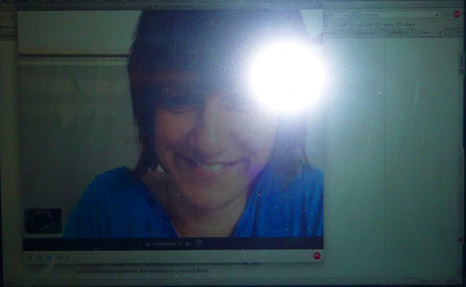

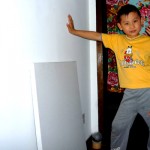
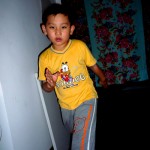
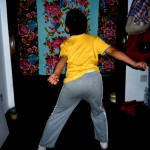
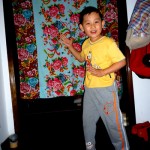
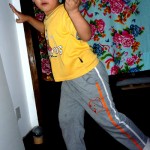
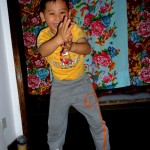
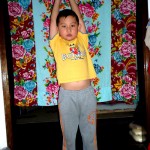
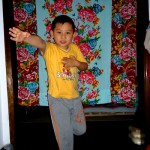
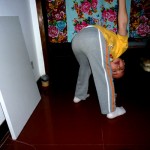
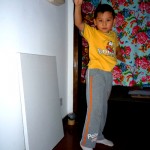
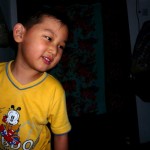
 时间 posted on: 21 June 2009 |
时间 posted on: 21 June 2009 |  发布者 author:
发布者 author: 
 分类 filed under:
分类 filed under: 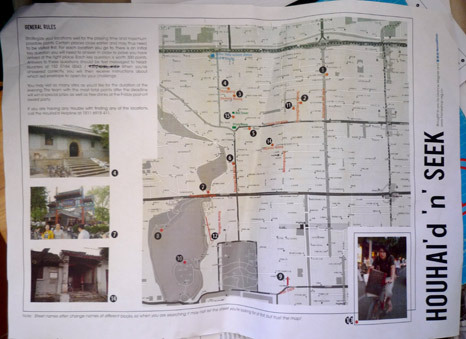 On June 9th about 30-40 students from Parsons and Tsinghua played the HouHai’d ‘n’ Seek urban game we’ve been working on with Leanne. Gaming lasted anywhere from a couple hours to the roaming raging of
On June 9th about 30-40 students from Parsons and Tsinghua played the HouHai’d ‘n’ Seek urban game we’ve been working on with Leanne. Gaming lasted anywhere from a couple hours to the roaming raging of 